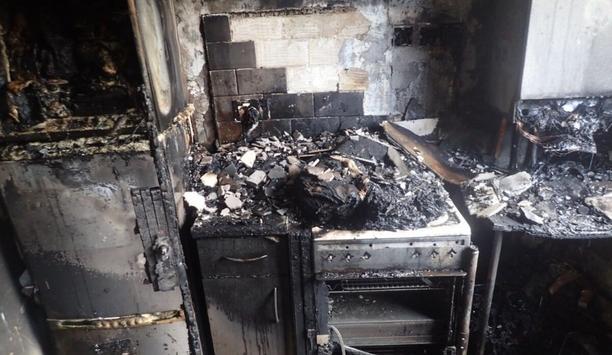Peroxides play a significant role in industrial production and people's lives, they are widely used as curing agents, catalysts, bleaching agents, deodorants, antiseptics, and disinfectants in the fields of polymer chemistry, fine chemicals, textile printing and dyeing, food processing, furniture manufacturing, etc.
However, peroxides are very unstable substances with high fire and explosion hazards. In recent years, major fire and explosion accidents caused by them have occurred continuously. It is very important to study the safety of peroxides in the process of production, transportation, storage, and use.
1. Hazardous properties of peroxides
1.1 Decomposition explosive
Peroxides all contain peroxy groups (-O-O-). Due to the weak bonding force of per oxygen, the energy required for breaking is very small. Peroxy groups are extremely unstable structures and extremely sensitive to heat, vibration, shock, or friction, and will decompose when subjected to slight external forces.
If the reaction heat release rate of the peroxide exceeds the heat dissipation rate of the surrounding environment, the temperature of the peroxide will increase under the action of the heat of the decomposition reaction, and even an explosion will occur. The organic peroxide stability order is: ketone peroxide < diacetyl peroxide < per ether < dihydrocarbyl peroxide. The low-grade homologs of various peroxides are more sensitive to mechanical action than the high-grade homologs and have a greater explosion hazard.
1.2 Flammability
Most peroxides burn easily and burn quickly and violently. When the peroxide is closed and heated, it is easy to change from rapid deflagration to detonation.
1.3 Personal injury
The personal injury of organic peroxides is mainly manifested in that it is easy to damage the eyes
The personal injury of organic peroxides is mainly manifested in that it is easy to damage the eyes, such as cyclohexanone peroxide, tert-butyl hydroperoxide, diacetyl peroxide, etc., all of these are harmful to the eyes, even if they are in short contact with the eyes, it can also cause serious damage to the cornea.
2. Hazardous characteristic parameters of peroxides
2.1 Accelerated decomposition temperature
The decomposition rate of peroxides increases with the increase in temperature. When the temperature is higher than a certain value, the decomposition reaction occurs automatically.
The thermal instability parameter of peroxides can be measured by the Self-accelerated decomposition temperature (SADT).
- SADT
The self-accelerating decomposition temperature refers to the lowest temperature at which the peroxide causes its self-accelerating decomposition during packaging, use, and transportation.
If the temperature exceeds the SADT, the peroxide will accelerate its decomposition, and the heat released by the reaction will accelerate its decomposition.
- Stability
Peroxides with fast decomposition rates, high activation energy, and large heat of formation have poor thermal stability
The self-accelerating decomposition temperature is related to the decomposition rate, activation energy, and heat of formation. With the increase in temperature, the decomposition rate of peroxides with high activation energy increases rapidly.
Therefore, peroxides with fast decomposition rate, high activation energy and large heat of formation have poor thermal stability.
2.2 Oxygen balance value
The energy of the peroxide decomposition explosion depends on the thermal energy and quantity of the gaseous products formed during the explosion, which is determined by the oxygen balance value. The oxygen balance value refers to the grams of oxygen required or remaining when a 100g substance explodes and produces a complete reactant. Peroxides have a negative oxygen balance, so their explosive energy is much lower than normal explosives.
However, the diffusion rate of peroxides when they explode is quite fast, and some peroxides are extremely sensitive to shock. According to the oxygen balance value, peroxides can be divided into two categories: explosive decomposition and non-explosive decomposition. Peroxides below -200 oxygen balance can decompose and explode.
3. Hazards in handling peroxides
3.1 Hazanger of peroxide production
In the production of peroxides, the control of reaction temperature and concentration is very important. The higher the reaction temperature, the faster the oxidation reaction, but the faster the decomposition of the product.
Since the heat released by the decomposition reaction is much larger than the heat released by the oxidation reaction, the reaction is difficult to control, and even an explosive decomposition reaction occurs and an explosion occurs. The higher the concentration of peroxide produced in the reaction, the faster the decomposition rate.
- Fire and explosion risk factor
If the control is improper and the explosion limit is reached, it is easy to cause an explosion
In the oxidation reactor, the ratio of peroxide to oxidant and product is an important fire and explosion risk factor in the reaction process. If the control is improper and the explosion limit is reached, it is easy to cause an explosion.
If the isopropanol method is used to produce hydrogen peroxide, the oxygen content in the exhaust gas is about 11% to 12.5% (volume percentage) at a temperature of nearly 120°C and a pressure of more than 1.0 MPa, and the hydrogen peroxide content in the reactant reaches 9 %, the acetone content is 20%, and the is acetone content is 57%, which can easily lead to the explosion of the oxidizer.
3.2 The danger of peroxide storage and transportation
Peroxides are solid or liquid products, rarely gaseous products. Solid peroxides that can decompose explosively are sensitive to shock and friction, and accidents may occur if care is not taken during storage and transportation.
If the peroxide is not sufficiently cooled during storage and transportation, the temperature will rise and exceed the self-ignition point, which will lead to its decomposition and explosion.
- Storage
Storing peroxide in a rough-surfaced container will accelerate its decomposition. For example, 38% hydrogen peroxide will not decompose when heated to 60°C in a polished platinum dish, but it will decompose at room temperature in a platinum dish with many scratches on the inner surface.
There is a great danger when the peroxide solution leaks, especially if the solvent is a volatile compound.
3.3 Hazards of peroxide mixing
Solid inorganic peroxides can also cause oxidation and fire when they come into contact with organic substances
The action of peroxides and organic substances can form explosive mixtures under certain conditions. Under the action of variable valence metal salts and amines, concentrated peroxides will rapidly decompose and cause explosions when mixed with strong acids. The acetone peroxide derivative accumulated in the still residue, which exploded in the presence of acid.
There have been many explosions and fire accidents when acetone peroxide derivatives containing polyester resins are mixed with solutions of cobalt naphthenate. Solid inorganic peroxides can also cause oxidation and fire when they come into contact with organic substances.
3.4 The danger of by-product peroxides
Many chemical processes, especially oxidation, polycondensation, and polymerization processes, even when only a small amount of oxides are present, will form peroxides; organic substances, such as solvents, monomers, and oxygen or oxygen-containing compounds in prolonged contact, can spontaneously oxidize to produce peroxides, which accumulate in various devices such as absorbers.
Peroxides formed in ethers can cause explosions. In the production of Acetylene-based primary alcohols, in the equipment for the isomerization of acetylene-based tertiary alcohols, the reactant exploded at 60°C in methanol solution with a concentration of 20% sulfuric acid.
- Accumulation
The peroxide stage is necessary for certain chemical processes, especially the liquid phase oxidation of organic products with oxygen, but the peroxides formed by these chemical processes may cause accidents.
For example, in the reaction of acetaldehyde oxidation to produce acetic acid, the intermediate product is peracetic acid, and peracetic acid is a very unstable and explosive compound. Because there is no catalyst in the upper gas phase space of the oxidation reactor, it is easy to cause the accumulation of peroxides and cause an explosion due to the sudden decomposition.
4. Fire-proof and explosion-proof safety measures
4.1 The passivation treatment
Solid peroxide particles can be coated with a thin layer of liquid paraffin deposition to reduce their susceptibility
To reduce the explosion hazard, the peroxide should be passivated, and the solid peroxide can be ground and passivated by mixing with chalk, solid organic acid, alumina, calcium sulfate, etc.
In many cases, solid peroxide particles can be coated with a thin layer of liquid paraffin deposition to reduce their susceptibility to mechanical action. Also used as peroxide passivation are silicone fluids, tricresyl phosphate, benzene, toluene, and others.
4.2 Add fillers or dilutions
Dry peroxides are sensitive and unstable, the most common method to reduce explosion is to add solvents or fillers that are not flammable or less flammable than peroxides.
As the most unstable peroxide diluent, dialkyl phthalate can effectively inhibit the decomposition process of peroxide derivatives. Silica, petrolatum and mineral oils, hydrocarbons, polyethylene, and dimethyl phthalate can all be used as inert fillers or diluents.
4.3 Safety measures for production
The production plant of peroxides should conform to the explosion-proof safety design. The most dangerous peroxide reaction kettle should be set up separately, and the surrounding area should be made of reinforced concrete shelter to be explosion-proof.
The upper part of the reaction kettle is equipped with a steel plate concrete cover, and the top part is open for pressure relief.
- Safety evaluation
When determining the process flow, the possibility of dry peroxide formation should be minimized
In the production of new peroxides, the safety evaluation should be based on laboratory tests and compared with the production test data of the strongest peroxides used in the industry. When testing the operating conditions, the equipment similar to the industrial plant should be applied to form the harshest environments by heating faster than the maximum speed of the production unit.
When determining the process flow, the possibility of dry peroxide formation should be minimized. The equipment structure should try to minimize the necessary contact time between peroxides and other substances, reduce the reaction volume, and minimize the number of intermediate products.
- Strict procedures
During the process, the procedures should be strictly followed, the concentration of materials should be controlled, the over-temperature operation should be prevented, and the shutdown of the process and the long-term storage of intermediate products with poor chemical stability should be avoided as much as possible.
When the process is forced to stop due to equipment failure or violation of process conditions, the materials in the relevant equipment must be completely discharged into a dedicated spare container, or make sure the temperature in the reaction equipment is lower than the specified temperature to prevent the spontaneous decomposition of peroxides.
- Safe shutdown
Processes with high concentrations of peroxides should be automated as much as possible and reliable interlocks are required to ensure a safe shutdown of production in the event of an emergency or violation of normal process procedures.
To prevent the explosion of the oxidation reactor, a gas analyzer for the gas phase mixture should be set up. When the oxygen concentration in the oxygen-enriched air increases to exceed the control standard, the shut-off valve on the mixed oxygen supply pipeline will be closed immediately.
- Safety gloves and goggles
Safety gloves and goggles must be worn when handling peroxides
When it comes to the production process of producing peroxides, the peroxides should be decomposed without a large amount of accumulation, catalysts should be added continuously and nitrogen protection should be introduced.
Safety gloves and goggles must be worn when handling peroxides. Because even diluted peroxide can cause skin or eye corrosion.
4.4 Storage safety measures
The storage location, storage volume, and distance from workshops, roads, and other facilities are determined according to the nature of the specific product and should meet the requirements of the specification.
Use a separate warehouse to avoid mixing heavy metal compounds, acids, alkalis, and amines.
- Refrigeration system
The temperature in the warehouse where the peroxide is stored should be much lower than its self-accelerating decomposition temperature. The refrigeration system should provide its own power generation and power supply system and a backup refrigeration compressor unit to ensure safe and reliable temperature control of the warehouse.
The temperature alarm system in the warehouse should be reliable and should have no less than two levels of alarms.
- Non-metallic packaging
All tank systems must be protected by inert gas and equipped with explosion-proof sheets
Peroxides are best kept in non-metallic packaging windows such as glass, ceramic, quartz, polyethylene, etc. Equipment and windows should be very clean. Each group of containers is isolated and stored in limited quantities to reduce the risk.
To prevent local overheating, a low-speed rotating stirrer should be appropriately configured in the storage tank containing peroxide. At the same time, at least 2 temperature-measuring instruments should be equipped, and if the first thermocouple fails, when the temperature is higher, the signal from the second thermocouple should enable the auxiliary system to start. All tank systems must be protected by inert gas and equipped with explosion-proof sheets.
4.5 Safety measures for transportation
Special safety measures should be taken when transporting peroxides. In most cases, peroxides are transported in specially refrigerated trucks equipped with temperature recorders. During transport and upon arrival at the designated location, check the thermometer readings to demonstrate that the peroxide has not been exposed to high temperatures since the car was loaded from the point of departure. Large quantities of peroxides shall be transported in tanks with polished or passivated inner surfaces.
Pipes with small diameters should be used to transport peroxide solutions, because heat dissipates quickly through the pipe wall, thereby reducing or preventing explosions. When a large diameter pipe must be used, the pipe should be equipped with cooling measures, which can be water-cooling process lines, pumps, and compressors.
4.6 Safety measures for removal and destruction
Large quantities of solid and slurried peroxides can be burned off with a fuse in a safe location
Equipment must be cleaned and cleaned regularly to prevent the accumulation of peroxides and other unstable precipitates. Select the method of removal and destruction according to the physical and chemical properties of the peroxide: the peroxide that is easily soluble in water can be removed with a large amount of flowing water. It can also be decomposed with excess alkali solution, followed by solution discharge, such as butanone peroxide derivative decomposed with excess 20% caustic soda solution.
A small amount of peroxide waste liquid can be absorbed by diatomaceous earth or sand. Large quantities of solid and slurried peroxides can be burned off with a fuse in a safe location. Very flammable peroxides, such as benzoyl peroxide, can only be burnt in small amounts.
4.7 Control measures of an ignition source
In the peroxide area, the ignition source should be strictly controlled and eliminated. The maintenance operation should be subject to safety assessment in advance, and there should be guards to remove the peroxide. Otherwise, no hot work is allowed.
A peroxide area is an explosion-hazardous place, and the electrical equipment should be explosion-proof as a whole; safety measures such as lightning protection and anti-static grounding should be adopted.
4.8 Fire fighting and rescue measures
Set up appropriate fire fighting equipment such as a dry sprinkler system, dry powder fire extinguisher, or Carbon Dioxide fire extinguisher. Provide emergency eye rinse equipment. When peroxide catches fire or is involved in the fire, it may cause an explosion. At this time, all personnel should stay away from the fire site as much as possible, and use fire extinguishing agents or plenty of water to put out the fire in the protected location.
Any peroxide that has been involved in a fire or exposed to high temperatures will decompose violently at any time. Even if the fire has been extinguished, it should not be close to the fire. It should be cooled with a large amount of water to prevent explosion accidents.















